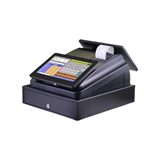ABS assistant director of social and progress reporting, Jane Griffin-Warwicke, said our AST analysis found that couples at different stages of their life have different priorities when spending their money.
"Younger couples spent more on housing than other things in 2009-10, whereas older couples spent more than others on recreation," said Griffin-Warwicke.
"We found that the way couples spend their income changes when children arrive. They often face new pressures with their household budget especially as income can go down with reduced working hours or parents leaving the workforce.
"After the arrival of children not so much is spent on alcohol, eating out or personal care items. New parent couples spend more on groceries, domestic fuel and power, health insurance and nappies," she said.
The report found that government pensions were the main source of income for two out of three older couples, so their income was much lower than that of younger couples.
"Older couples tend to have lower housing costs than other couples, with 83 per cent owning their home without a mortgage," Griffin-Warwicke added. "While their spending on medical costs and food bills was higher than it was in 1984 (after taking inflation into account), their spending on recreation has also gone up.
"On average in 2009-10, couple households spent a similar amount on housing costs, food and non-alcoholic drinks, and transport – nearly a fifth on each. Around an eighth of their spending was on recreation. These were also the main areas of spending in 1984," she said.
- Suppliers
- New to HospitalityHub? Book a Demo
- Advertise with us
- Login
- Email Marketing
- Buyers
- Get Quotes
- Articles & Ideas
- Login
- Subscribe to newsletter
- My Details
- Get Quotes
- Bakery & Dough Processing Equipment
- Bar Equipment & Barware
- Bathroom Fixtures & Accessories
- Chocolate Making Machinery
- Cleaning & Housekeeping
- Commercial Coffee Equipment
- Commercial Cooktops
- Commercial Fridges & Freezers
- Commercial Kitchen Equipment
- Commercial Ovens
- Dish, Utensil & Glass Washing
- Entertainment & Outdoor
- Food Packaging & Ingredients
- Food Preparation Equipment
- Furniture & Fixtures
- Pizza & Pasta Making Equipment
- Point of Sale, AV & Technology
- Get Quotes
- Bakery & Dough Processing Equipment
- Bar Equipment & Barware
- Bathroom Fixtures & Accessories
- Chocolate Making Machinery
- Cleaning & Housekeeping
- Commercial Coffee Equipment
- Commercial Cooktops
- Commercial Fridges & Freezers
- Commercial Kitchen Equipment
- Commercial Ovens
- Dish, Utensil & Glass Washing
- Entertainment & Outdoor
- Food Packaging & Ingredients
- Food Preparation Equipment
- Furniture & Fixtures
- Pizza & Pasta Making Equipment
- Point of Sale, AV & Technology
Trusted by 200,000+ Australian hospitality buyers
Buyers
- Discover products & solutions
- Login
- Subscribe To Newsletter
- Browse All Products
- Read Articles
Suppliers
Advertise
- Promote your products & solutions
- New to HospitalityHub? Book a Demo
- Login / Forgot Password
- Advertise Your Products
- Success Stories
- Email Marketing
Trusted by 200,000+ Australian hospitality buyers


